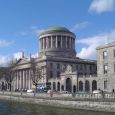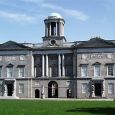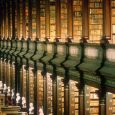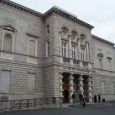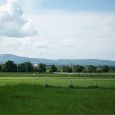Dublin
Advertisement
By Air
Dublin International Airport is located just seven miles from the centre of the city and provides a good bus service for the short connection into the city. Alternatively, taxis and car hire are also available. Many international airlines offer flights to Europe and the USA from the airport, and domestic flights are available to Cork, Donegal, Galway, Kerry, Shannon and Sligo.
By Rail
You can organise your journey by train through the InterRail service offered by Larnrod Eireann, Ireland's national rail carrier. A joint train/ferry ticket is available and there are channel services from Britain, with ferry connections taking you across the Irish Sea, both by day and night.
Daily train services operate to Dublin from Belfast, Northern Ireland and all major cities in the Irish Republic including Cork, Galway, Limerick, Wexford and Waterford. Trains from the south and west arrive at Heuston Station, off St John's Road, while trains from the north and northwest arrive at Connolly Station, on Amiens street. If you intend to use the rail service as your mode of transport while in Ireland, you may want to consider one of Larnrod Eireann's Explorer Tickets, which offer discounted prices.
By Bus
Long distance bus services from Britain to Ireland are operated by Eurolines in conjunction with Bus Eireann. The luxury buses are all equipped with onboard toilet facilities and reclining seats.
Within Ireland, Bus Eirann provides a nationwide expressway service, provincial service and city service. Routes and destinations include Cork, Galway and Limerick as well as Belfast and Derry in Northern Ireland. Services are more frequent than those provided by the rail network. The bus station is located on Store Street, behind Custom House
Advertisement
Four Courts
Capel Street descends to the Liffey at Gratton Bridge. 0.25mi/400m upstream, on Inns Quay, is a masterpiece by James Gandon, the Four Courts, seat of the Irish High Court and Supreme Court. Built between 1786 and 1802, it incorporated plans by Thomas Cooley, who died before building began. After being badly damaged by gunfire during the Civil War in 1922 it was restored in 1931 with minor alterations. The 456ft/139m long river-front with its Corinthian portico is dominated by a great domed rotunda which is a prominent Dublin landmark. The central hall beneath the dome gave access to the four courts from which the building takes its name - the Exchequer, Common Pleas, King's Bench and Chancery Courts.
King's Inns
Going south from the end of Granby Row down Upper Dorset Street (the main road north to Dublin airport, the N1) and Bolton Street, we come to Henrietta Street, a cul-de-sac on the right, at the far end of which, on a high base, are the King's Inns (designed by James Gandon in 1795; the two wings on the west front are later additions), the headquarters of the ruling body of the Irish legal profession, with a fine Dining Hall (sculpture by Edward Smyth) and a large library.
Old Library
For tourists the most interesting building on the Trinity College campus is the Old Library. Since 1801 the library has been a copyright library, i.e. it is entitled to receive a copy of every book published in Ireland and Great Britain. It now has some 5,000 manuscripts and two million printed books. Among its treasures are manuscripts, incunabula and early printed books. On the ground floor, the so-called Colonnades, the Book of Kells (eighth century) is displayed. This book, containing the four Gospels, has some 340 richly decorated pages, one of which is on show each day; the beginnings of the Gospels and of individual chapters have particularly elaborate decoration.
Other especially valuable treasures are the "Book of Durrow" (seventh century), the "Book of Dimma" (eighth C.), and the "Book of Armagh" (ninth century, with an 11th C. leather binding). From the ground floor a handsome staircase by Cassels leads up to the Long Room, 200ft/60m long with a timber barrel-vaulted roof. Here can be seen marble busts of famous members of the university and an Irish harp, one of the oldest instruments of its kind.
National Gallery
This impressive gallery received a major renovation in 1996, along with the addition of the award-winning Millennium Wing in 2002. The collection of 12,000 artworks includes watercolours, oils, drawings, paints and sculptures. There is a whole room dedicated to displaying Ireland's most famous artist’s works, Jack B Yeats, and the Shaw Room is lined with full-length portraits and beautiful Waterford crystal chandeliers. One of the highlights is Caravaggio's ‘The Taking of Christ’, which lay undiscovered for over 60 years in a Jesuit house in Leeson street until it was found accidentally by the museum's curator in 1992.
Phoenix Park
From Dublin's Collins Barracks at Blackhall Place, Parkgate Street leads west to Phoenix Park. This large public park (767 ha/1,752 acres) owes its name, not to the phoenix on a column set up in 1747 by the Viceroy, Lord Chesterfield who established the park, but to the Irish name of a nearby spring, Fionn Uisg ("Clear Water").
The Ashtown Castle Visitor Centre is located in a tower house dating from the 17th C. Visitors can view a historical interpretation of the past from 3500 B.C. to the present.
May - September
July - August -> 19(°C) - Summer
January - February -> 2(°C) - Spring
Advertisement

